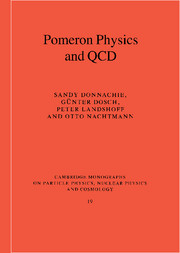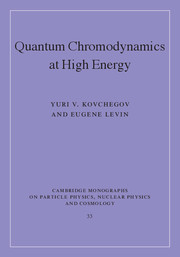Pomeron Physics and QCD
This volume gives an account of modern knowledge of Regge Theory and QCD, an active area of high-energy particle-physics research. It records what has been learned in the past, what is relevant now, and what is essential for the future. The authors cover forty years of research and provide unique insight into the theory and its phenomenological development. The phenomenology is applied to a variety of reactions and is compared extensively with experiment. This is essential reading for particle physicists and is suitable as a graduate textbook.
- Was the first book to give comprehensive coverage of this field
- The discussion is illustrated and explained by numerous diagrams and figures
- Suitable for graduate courses in particle physics
Reviews & endorsements
'The authors have considerable expertize and experience, which they particularly bring to bear when presenting their ideas on the use of non-perturbative techniques to study the pomeron. They are also the principal advocates of the idea that there may be two pomerons, with one pomeron dominant in soft interactions and the other dominant in hard interactions … such a well written and accessible book as this is most welcome. … high-energy processes. … provides an excellent introduction to the subject.' Cern Courier
Product details
December 2002Hardback
9780521780391
360 pages
244 × 170 × 21 mm
0.77kg
159 b/w illus. 3 tables
Available
Table of Contents
- 1. Properties of the S-matrix
- 2. Regge poles
- 3. Introduction to soft hadronic processes
- 4. Duality
- 5. Photon-induced processes
- 6. QCD: perturbative and nonperturbative
- 7. Hard processes
- 8. Soft diffraction and vacuum structure
- 9. The dipole approach
- 10. Questions for the future
- Appendix A. Sommerfeld-Watson transform
- Appendix B. The Group SU(3)
- Appendix C. Feynman rules of QCD
- Appendix D. Pion-nucleon amplitudes
- Appendix E. The density matrix of vector mesons.




